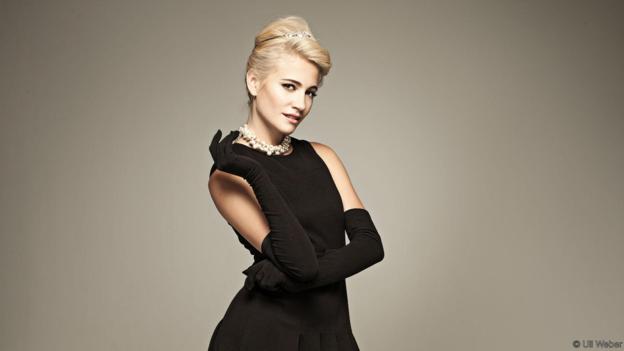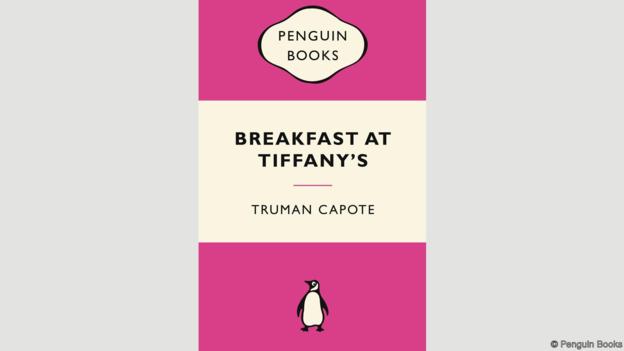How Hollywood rewrote a gritty story
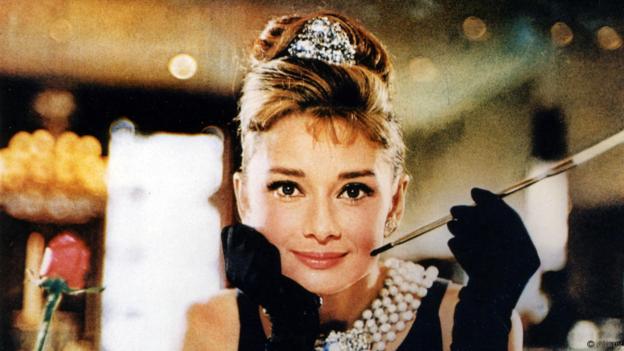
BADPJM BREAKFAST AT TIFFANY’S 1961 Paramount with Audrey Hepburn
As a new production of Breakfast at Tiffany’s comes to the London stage, Holly Williams looks at how the iconic book and film have been reinvented.
The little black dress. The pearls; the oversized sunglasses and the absurdly long cigarette holder. Breakfast at Tiffany’s – the 1961 film based on Truman Capote’s 1958 novella – has become more famous for its visual shorthands, its signifiers of New York chic and fashionable femininity, than its actual story or characters.
We think we know Holly Golightly – but really, we know Audrey Hepburn, tripping elegantly through the streets of the city in her LBD or Burberry mac, two items that are near-clichés, so often are they trotted out as timeless fashion classics. It’s the face that launched a thousand prints, with posters of the movie adorning vintage-loving women’s walls the world over, a symbol for a bygone era of glamour. It’s a weirdly reanimated Hepburn who flogs Galaxy chocolate bars in an advert, soundtracked by Moon River, Henry Mancini’s hit song for the film.
And when people further reinvent Breakfast at Tiffany’s – which keeps happening on stage – it’s her shoes young starlets are required to fill. ‘But how do they live up to Audrey Hepburn?’ is the question asked in hushed tones, not whether they suit the character.
We think we know Holly Golightly – but really, we know Audrey Hepburn
Ms Golightly of the book and Ms Golightly of the film are in fact rather different, but both sparkle like a Tiffany diamond. She is a beguiling character: a seductive but kooky society girl, maddeningly flitting and flirtatious. She’s an unknowable, untameable ‘wild thing’, who fled to New York from a troubled hillbilly upbringing in Texas in order to reinvent herself.
Still, for all the cocktail-drinking and party-giving, she’s prone to suffering bouts of crippling fear – her famous “mean reds” – and can only afford her seemingly-glamorous life by surrounding herself with “rats”, no-good men whose powder-room tips she enthusiastically pockets. She’s described as a phony – but a “real phony”, because she really believes her own fairy-story gloss on life.
Difficult second act
The latest production to have a crack at staging this mercurial creature is currently touring the UK; written by Tony-winning American playwright Richard Greenberg.
Following more closely the plot of the book than the film, the play arrives in London’s West End in June. Pixie Lott plays Holly Golightly – not a terrible bit of casting. Holly is the proto It Girl: a not-quite-actress who achieves notoriety by going out and about rather than really doing anything; Lott is a fading pop star turned reality TV contestant turned actress, a tabloid staple and general face-about-town. You could say there are parallels.
Lott is making her stage debut with Breakfast at Tiffany’s, so who knows if she can act? Ordinarily, you’d worry for a young star stepping straight into a much-beloved, genuinely iconic role – but somehow, with Holly Golightly, it’s considered just fine.
When a girl is best known for how she looks in a little black number and chignon, any attractive young star can play her, right? That’s surely why this tour, despite actually featuring three actresses playing the character – the others being the lesser-known Emily Atack and Georgia May Foote – is very much publicised as ‘Pixie Lott in Breakfast at Tiffany’s’, a double till-ringer of classic movie and contemporary celebrity.
But if that sounds like a copper-bottomed sell – well, don’t bet on it. When the play opened on Broadway in 2013, it starred Emilia Clarke, another stage debut for an actress keen to reshape her reputation, synonymous as she is with the icy-blonde Daenerys in Game of Thrones. But the show closed quickly, after lukewarm reviews, with complaints it was too downbeat and Clarke lacking the enigmatic insouciance of this most charming creation. Holly, it turns out, is a tougher part than she seems, despite how easy Hepburn made it look.
The director, Sean Mathias, had also had a crack at another, different stage version in the West End in 2009, with Anna Friel, who reportedly made a more winning Golightly, but still couldn’t quite make the show work. Critics were divided, and Breakfast at Tiffany’s failed to become a classic in a third medium. Still, those were glittering successes compared to the ill-fated 1966 musical version – a famous flop, which producer David Merrick shut after a mere four nights, describing it as an “excruciating bore”.
Why should stage versions of the book struggle when the movie has become such an enduring hit?
But why should stage versions of the book struggle when the movie has become such an enduring hit, and a pop culture touchstone that goes way beyond the book’s initial reach? It may be that they’re caught between a rock and a hard place: too similar to the movie and they can’t live up to the light-touch charisma and now ossified iconography of Hepburn; too like the book, and they lose the expected, populist fantasy, making the show a tougher sell. For there are major differences between the two – and it’s the film that has the most fans, that will bring gangs of girls to the stalls.
It’s worth noting that the casting of Hepburn, which now seems immutable, was considered by Capote himself to be a terrible choice. “It was the most miscast film I’ve ever seen”, he told a journalist years later. “It made we want to throw up.” Capote wanted Marilyn Monroe for the part. Arguably, she would have inhabited this “real phony”, mistress of reinvention and seller of dreams, more authentically than Hepburn, the aristocratic ingénue.
Not that kind of girl?
It’s almost ironic that the film is now used to sell a kind of capitalist elegance, an aspirational vision of a certain label look, of shopping at Tiffany’s and Givenchy (Hepburn was the designer's long-term muse). In the novella, not only is Holly pretty broke (she can’t afford Tiffany diamonds), but the clothes she wears are quite deliberately plain. She sparkles, not her outfits: “there was a consequential good taste in the plainness of her clothes, the blues and greys and lack of lustre that made her, herself, shine so.” That iconic LBD? You’re not even meant to notice it.
The film’s script lifts wholesale much of her babbling chatter, where everyone’s a “darling”, and many of Capote's zinging lines: Holly describes herself “top banana in the shock department”, and wins a spat with this killer: “It should take you about four seconds to walk from here to the door. I'll give you two.” But there’s one line in particular that gets changed at the top of the film – and with it, alters the entire tenor of the story.
We see Holly oh-so-charmingly closing her door on an exasperated would-be suitor. His complaint? “When you asked for a little change for the powder-room, what did I give you? A $50 bill! Now doesn’t that give me some rights?” In the film: no. The door is shut. She’ll take the rat’s money, but she won’t give them her body; she ain’t that kind of gal.
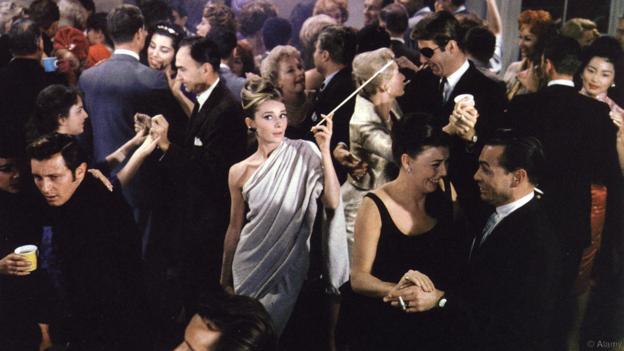
A053KR BREAKFAST AT TIFFANY’S 1961 Paramount film with Audrey Hepburn
But in Capote’s story… she very much is. Holly still shuts the door on the unpleasant chap – but then opens it a crack to tell him where he went wrong: “The next time a girl wants a little powder-room change… take my advice, darling: don’t give her twenty cents!” The implication being, of course, that had he stumped up $50, the door to her bedroom would have been invitingly ajar. It’s a grimier, grittier story, where she isn’t just an airy young tease, but actually makes her money in the oldest way known to man.
But the most famous changes the film makes are, surprise surprise, to the ending. The book is narrated by an unnamed – probably gay – writer, and forms a melancholic look back at a captivating girl he once knew, who fled New York after being implicated in a drugs bust. The film, however, makes him a heterosexual Hollywood hero, the romantic lead who eventually persuades the tearaway young girl to settle down and embrace love.
Despite the frothy, fizzing readability of Capote’s shimmering prose it leaves a more bitter taste
For balance, Paul is also a kept man – his interior decorator (an older woman) leaves him cash after their romantic trysts, ostensibly supporting his writing career – making him and Holly an equivalent pair of misfits, who need to shun their foolish youthful ways. They’re just perfect for each other, if only she’d realise it…
So we’re suddenly in a classic rom-com situation, and their final-scene kisses in the pouring rain becoming the blueprint for the genre, from Four Weddings and a Funeral to The Notebook. The novella meanwhile – despite the frothy, fizzing readability of Capote’s shimmering prose – leaves a more bitter taste, Holly scooting away in a cab never to be seen again. Golightly is a wild thing; there’s no containing her, no making her stay. She keeps on going lightly over the world, even if the need to keep reinventing herself starts to look more like a heavy burden.
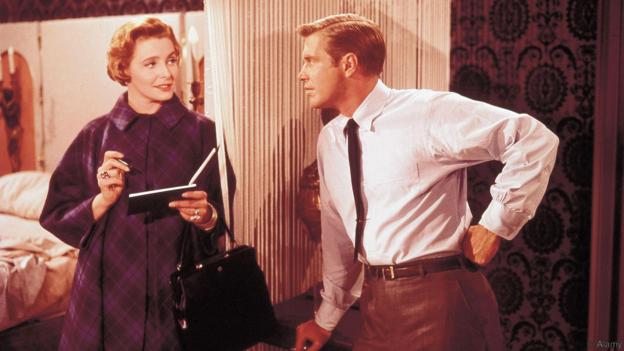
F6ECA9 1961; Breakfast At Tiffany’s. Original Film Title: Breakfast At Tiffany’s, PICTURED: PATRICIA NEAL, GEORGE PEPPARD, Composer: Henry Mancini, Director: Blake Edwards, IN CAST: George Peppard, Buddy Ebsen, Martin Balsam, Mickey Rooney, Audrey Hepburn, Patricia Neal, Jose Luis De Vilallonga
So maybe it’s apt that this character keeps on being reinvented – and offering young actresses their own chance to reinvent themselves. Critics aren’t invited for breakfast till the show lands in the West End, but it’ll be interesting to see if this latest Holly is simply a fashionable clothes horse, a placeholder for a romanticised view of feminine glamour, or if she’ll prove “top banana in the shock department” – and actually find the grit at the heart of this pearl.
Политика конфиденциальности | Правила пользования сайтом
